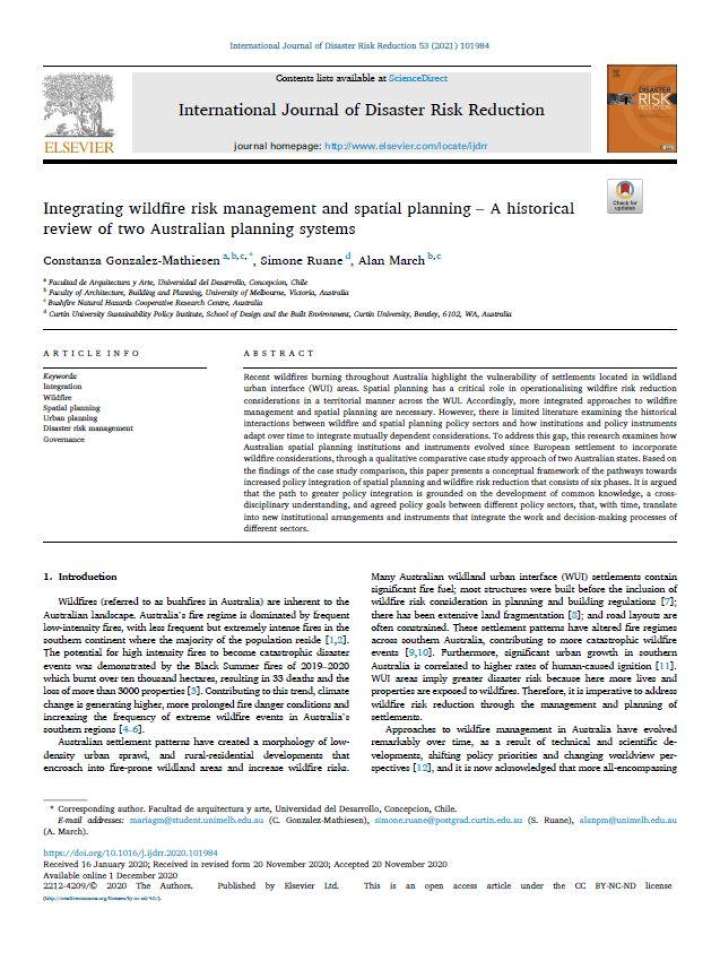Integrating wildfire risk management and spatial planning – A historical review of two Australian planning systems
This research examines how Australian spatial planning institutions and instruments evolved since European settlement to incorporate wildfire considerations, through a qualitative comparative case study approach of two Australian states. This paper presents a conceptual framework of the pathways towards increased policy integration of spatial planning and wildfire risk reduction that consists of six phases.
The analysis demonstrates that development of these case study subjects towards the integration of spatial planning and wildfire management systems follow a similar trajectory (sequencing of events), which have been influenced by similar trends, underpinning conditions and events (causal mechanisms). It is suggested that changing international spatial planning and disaster policy trends have, and continue to, influence approaches towards spatial planning in wildfire-prone areas.
Explore further
